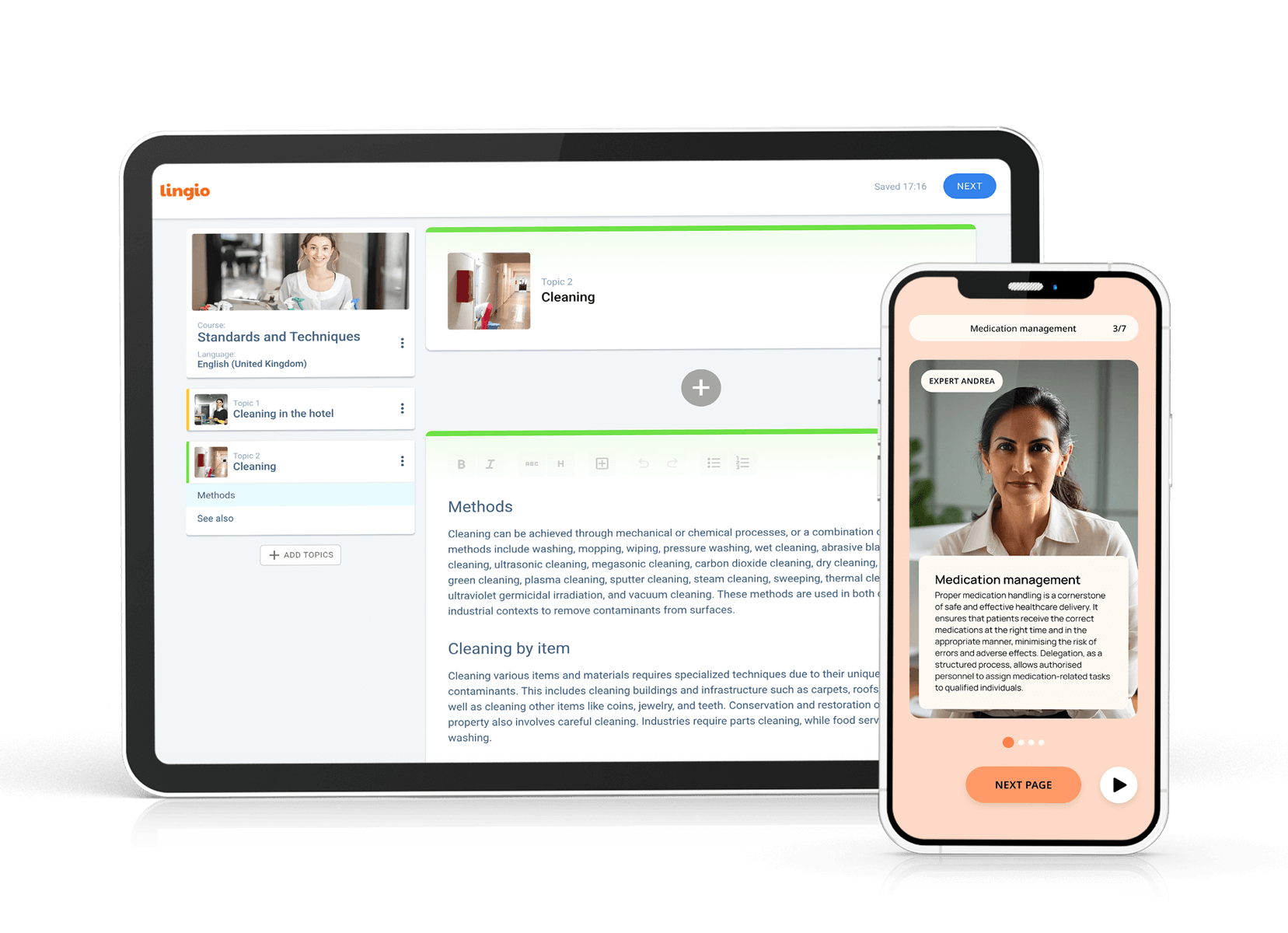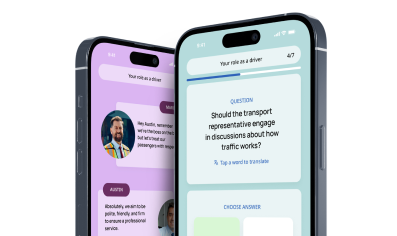Upskilling employees has become crucial for businesses to stay competitive. In 2025, it's clear that the need for an upskilling strategy will only continue to grow. In this article, we will explore the challenges and needs to expect when upskilling in 2025 and provide you with 16 useful tips to try now.
Why is upskilling crucial in 2025?
Upskilling employees goes beyond simply training them for their current roles. It involves providing them with the necessary skills and knowledge to adapt to future challenges and take on new responsibilities. By investing in upskilling, businesses can foster a culture of life-long learning and ensure that their current workforce remains agile and future-ready.
One key aspect of upskilling is identifying the specific needs of each employee and tailoring training programmes to address those needs. This personalised approach not only enhances the effectiveness of the upskilling program but also boosts employee engagement and motivation. Furthermore, by aligning upskilling initiatives with the overall business strategy, business leaders can ensure that their current workforce development efforts directly contribute to achieving organisational goals.
Moreover, upskilling and training employees can significantly impact employee retention and satisfaction. When employees see that their employer is invested in their growth and development, they are more likely to feel valued and motivated to stay with the company long-term. This can result in lower turnover rates, saving businesses time and resources that would otherwise be spent on recruiting and training new staff. Additionally, investing in upskilling leads to increased employee retention rates, contributing to a stronger company culture.
Upskilling in 2025: Challenges, skills gaps, and needs to expect
In 2025, there are several challenges and needs to expect regarding the benefits of upskilling your employees. Rapid technological advancements, changing job roles, and evolving customer expectations are just a few factors that make upskilling a pressing requirement for businesses. An agile workforce is essential for businesses to adapt to these rapid changes.
One of the main challenges of upskilling in 2025 is keeping up with technological change. Automation, artificial intelligence, and machine learning are reshaping industries and disrupting traditional job roles. To remain competitive, businesses must provide employees with the technical skills to work alongside these technologies.
Another challenge is addressing customers’ changing needs. Customer expectations constantly evolve, and businesses must adapt to meet these demands. Upskilling employees in customer service, communication, and problem-solving will be crucial to ensuring customer satisfaction and loyalty.
Furthermore, upskilling in 2025 will require a focus on soft skills. As automation takes over routine tasks, all employees must develop creativity, critical thinking skills, and emotional intelligence skills to thrive in their roles.
Moreover, in the fast-paced world of 2025, the upskilling program will need to be dynamic and flexible to cater to the ever-changing needs of the workforce. Continuous learning and development will be key to staying relevant in a rapidly evolving job market. Businesses must invest in platforms and tools that allow employees to upskill at their own pace, whether through online courses, workshops, or mentorship programmes, and address skills gaps effectively.
Practical tips for continuous learning and upskilling your employees
So, let’s dive into practical tips on how to upskill employees in 2025 so that you can implement all the ideas as soon as possible.
1. Identify future skill needs
To stay competitive in an ever-evolving market, organisations must proactively identify skills gaps and the skills their workforce will need in the future. This involves analysing current industry trends, technological advancements, and future predictions to pinpoint which skills will be most valuable. For instance, as artificial intelligence and machine learning become more integrated into various industries, skills in these areas might become crucial for many roles.
By understanding these trends, organisations can tailor their upskilling programs to address future needs, ensuring employees are well-prepared and the organisation remains at the forefront of innovation. This strategic approach enhances company competitiveness and boosts employee morale and career development as they gain relevant and cutting-edge leadership skills.
2. Create personalised learning paths
Recognising individual differences in learning styles, career aspirations, and skill levels is key to developing an effective upskilling program. Personalised learning paths allow employees to focus on acquiring skills relevant to their current role and aligned with their own career progression goals. This could involve on-the-job training, online courses, and project assignments tailored to each employee’s development needs.
Incorporating existing skills into the learning paths ensures that employees build on their current capabilities, making the learning process more efficient and relevant. Personalisation ensures that learning is more engaging and relevant, increasing the likelihood of retention and application of new skills. It also demonstrates an organisation’s commitment to supporting individual growth, leading to increased job satisfaction and loyalty.
3. Leverage online learning platforms
Online learning platforms like Lingio offer courses and certifications across various fields, providing a flexible and accessible solution for employee upskilling. These platforms accommodate different learning preferences and schedules, allowing employees to engage with content at their own pace from anywhere. This flexibility is particularly beneficial for organisations with a diverse or remote workforce.
Additionally, many online platforms provide up-to-date, industry-relevant content, ensuring that employees gain the most current and relevant skills and knowledge. By leveraging these resources, organisations can offer comprehensive learning opportunities without the logistical challenges of traditional in-person training.
4. Encourage learning in the flow of work
Integrating learning opportunities into daily work activities allows employees to develop new skills in a practical context, enhancing retention and applicability. This approach encourages employees to identify learning moments in routine tasks and projects, applying new knowledge immediately to real-world situations. It transforms the workplace into a continuous learning environment, where skill development becomes a natural part of the work process. This integration can significantly boost employee productivity by making learning a seamless part of their daily routine.
5. Implement mentorship programs
Mentorship upskilling program connects less experienced employees with seasoned professionals, facilitating a hands-on approach to learning. This relationship allows for transferring tacit knowledge and skills often not captured in formal training materials.
Mentors can provide guidance, feedback, and support, helping mentees navigate career challenges and develop professionally. This personalised support accelerates learning and development, building a stronger, more cohesive workforce.
6. Offer microlearning opportunities
Microlearning breaks down information into small, manageable units, making it ideal for busy professionals. This approach addresses specific skill gaps quickly and efficiently without overwhelming the learner with too much information at once. Microlearning modules can be accessed on-demand, fitting seamlessly into short breaks or downtime, and are perfect for reinforcing concepts and ensuring long-term retention.
7. Foster a company culture of continuous learning
Creating a workplace where learning is an ongoing, valued activity encourages employees to engage in professional development actively. This can be achieved by recognising and rewarding learning achievements, providing time and resources for learning activities, and promoting an open-minded culture where seeking knowledge is encouraged. A continuous learning culture not only keeps skills and knowledge up to date but also motivates employees by showing an investment in their growth.
8. Utilise gamification techniques
Gamification introduces game-like elements into the learning process, making it more engaging and enjoyable. Elements like badges for course completion, leaderboards to encourage friendly competition, and rewards for achieving learning milestones can significantly increase motivation. Gamification turns learning into a dynamic and interactive experience, encouraging repeated engagement with the material and improving retention.
9. Provide access to industry conferences and workshops
Attending industry conferences and workshops exposes employees to the latest trends, technologies, and best practices. It also provides valuable networking opportunities, allowing employees to connect with peers and experts in their field. By sponsoring employees to attend these events, organisations can enhance their workforce’s skills and knowledge base while demonstrating a commitment to their professional development.
10. Regularly review and update training materials
Reviewing and updating training materials regularly is crucial to ensure the relevance and effectiveness of upskilling initiatives. Incorporating employee feedback about their learning experiences can help identify areas for improvement, making the training more impactful. Staying ahead of industry changes and advancements ensures that the training content remains current and valuable.
11. Promote peer-to-peer learning experiences
Encourage an environment where employees develop and learn from each other through shared experiences and knowledge exchange. Peer-to-peer learning leverages the diverse skill sets within your team, allowing employees to teach and learn from their colleagues. This collaborative approach diversifies the learning experience and fosters team cohesion and a supportive work culture.
12. Integrate real-world projects into learning
Incorporate practical, real-world projects into your upskilling program to provide employees with hands-on learning opportunities. Applying new skills to actual business challenges reinforces learning and demonstrates the direct impact of upskilling on organisational goals. This approach bridges the gap between theoretical knowledge and practical application, allowing employees to experiment, innovate, and refine their skill gaps in a real-world context.
13. Establish clear learning objectives and milestones
Set specific, measurable learning objectives and milestones to guide the upskilling process. Clearly defined goals help employees understand what they are expected to learn and when providing a structured framework for their development journey. Aligning these objectives with individual career progression and organisational needs ensures relevance and motivation. Regular check-ins and progress assessments can help keep employees on track, celebrate achievements, and adjust learning plans as necessary to accommodate changing priorities or challenges.
14. Leverage expert-led workshops and webinars
Utilise the expertise of industry professionals by incorporating expert-led workshops and webinars into your training programs. These sessions can give employees insights into industry trends, advanced techniques, and best practices from seasoned experts. External perspectives can inspire innovation, challenge conventional thinking, and broaden employees’ understanding of their field. Providing access to these learning opportunities demonstrates a commitment to high-quality development and keeps your workforce engaged with the latest industry knowledge.
15. Support learning beyond formal training
Recognise and support informal learning opportunities that occur outside traditional training environments. Encourage employees to seek self-directed learning resources like industry publications, online forums, and professional networks. Attending industry meetups, hackathons, or community events can enrich employees’ learning experiences.
Facilitating access to diverse learning resources and experiences fosters a proactive approach to professional development, where employees take ownership of their professional growth and continuously seek out new knowledge and skills.
16. Implement feedback loops for continuous improvement
Create mechanisms for continuous feedback throughout the training process, allowing employees to share their insights, experiences, and suggestions for improvement. This two-way feedback loop helps refine the training programs to meet employee needs better and makes learners feel valued and heard. Regularly soliciting feedback post-training sessions through surveys, focus groups, or one-on-one meetings can uncover insights into the effectiveness of the learning material, the relevance of the data taught, and areas for enhancement of the skill gaps.
Mastering technical skills and upskilling with Lingio in 2025

Upskilling employees in 2025 is not just a necessity but a strategic imperative. Human capital management plays a crucial role in tracking and managing employee skills. By embracing the challenges and needs of upskilling in the coming years, businesses can empower their workforce to thrive in a rapidly changing landscape. The 16 valuable tips in this article serve as a roadmap to help enterprises effectively upskill their current employees and build a future-ready organisation.
Elevate your team’s capabilities with Lingio’s state-of-the-art AI learning solution. Tailored for 2025 and beyond, Lingio offers an immersive, personalised learning experience that seamlessly aligns with your strategic goals. Explore Lingio and discover how to future-proof your workforce with our innovative upskilling and reskilling platform. Transform your training approach and unlock your team’s potential with Lingio.
Adapting to changes in the job market requires acquiring a new skill, and Lingio’s pioneering AI learning solutions are designed to meet these dynamic needs. Designed for the dynamic needs of 2025, Lingio offers a bespoke, engaging learning journey to keep your team ahead. Discover the future of upskilling with Lingio — transform your employees into leaders of tomorrow.
FAQs
1. How can organisations identify which skills to focus on and identify skills for upskilling?
Organisations can identify upskilling needs by analysing industry trends, technological advancements, and future project requirements. Employee surveys and performance reviews can also highlight areas for skill development, making the hiring process more effective by evaluating candidates' skills during recruitment.
2. Are online learning platforms effective for upskilling employees?
Yes, online learning platforms like Lingio offer flexible, diverse, and up-to-date learning resources that are highly effective for upskilling employees. They allow learners to progress at their own pace and access courses tailored to their needs.
3. How can small businesses implement upskilling programs with limited resources?
Small businesses can leverage free or low-cost online learning resources, create mentorship programs, have training and development opportunities and encourage peer-to-peer learning to facilitate upskilling. Focusing on core skills and utilising existing staff expertise can also maximise resources.
4. How can employee engagement in upskilling programs be increased?
Engagement can be increased by creating personalised learning paths, offering incentives, recognising achievements, and ensuring the relevancy of the training to the employees’ career advancement goals. Encouraging feedback and actively involving employees in planning can also boost engagement.
5. Can upskilling help in employee retention?
Absolutely. Upskilling demonstrates an organisation’s investment in its employees’ growth, increasing job satisfaction, loyalty, and morale. This not only aids in retention but also attracts job seekers looking for employers who value professional development.


Table of contents
Intro
Why is Upskilling crucial in 2025?
Upskilling in 2025: Challenges and needs to expect
Practical tips for upskilling your employees
Mastering Upskilling with Lingio in 2024
FAQs


